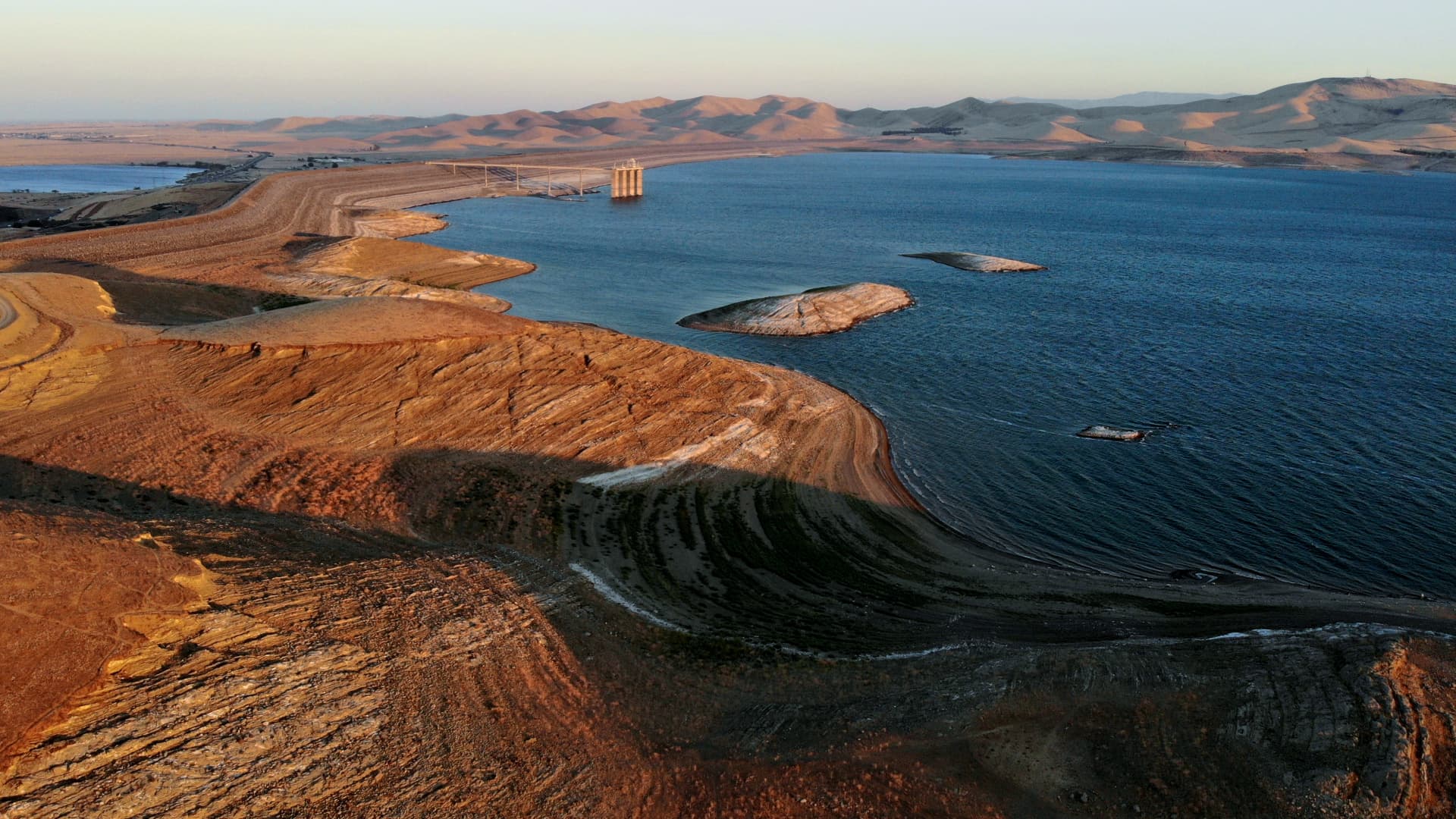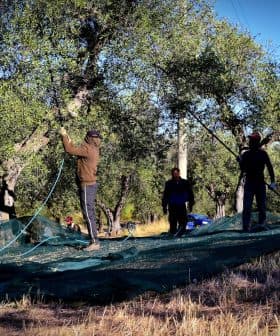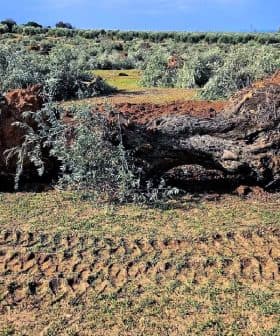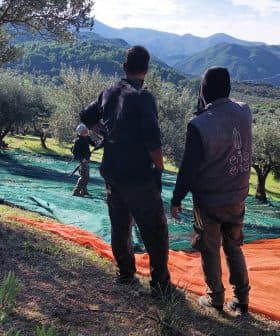Tightening Water Regulations in California May Spur Olive Cultivation

Climate experts predict that California will continue to become hotter and drier despite a wet 2023 due to El Niño. The state may face up to a 10 percent reduction in water supply by 2040, leading some farmers to consider drought-resilient olives as a crop of the future. The ongoing droughts in California, combined with the Sustainable Groundwater Management Act and climate change, are expected to reduce water supplies by 20 percent in the San Joaquin Valley by 2040, potentially leading to a shift towards more water-efficient crops like olives.
Despite the development of El Niño in the eastern Pacific Ocean resulting in a wet 2023 for California, climate experts anticipate the Golden State to continue becoming hotter and drier.
According to the office of Governor Gavin Newsom, hotter and drier weather conditions due to climate change could reduce the state’s water supply by up to 10 percent by 2040.
Olive trees will use plenty of water if they’re irrigated fully; whether or not a grower is conserving water depends on how they manage the orchard, which is not always easy to get right.
The Public Policy Institute of California (PPIC) estimates that 40 percent of all the state’s water is used in agriculture. As the state enacts tougher water regulations and encourages improved water use efficiency, some farmers are already betting on drought-resilient olives as a crop of the future.
“Olives are not the only tree crop out there that can withstand a little deficit irrigation, but olives stand out for their drought tolerance,” Caitlin Peterson, the PPIC Water Policy Center’s associate director, told Olive Oil Times.
See Also:Olive Trees Can Help Beat Climate Change“They can grow on very marginal land with poor soils, something that can’t be said for many of the dominant tree crops in California, such as almonds, walnuts or stonefruit,” she added,
According to Peterson, both table and oil olives are drought-resilient. Table olives can quickly recover fruit size after a temporary reduction in irrigation, even up to a 50 percent reduction in midsummer. However, they can withstand even more severe reductions with a small (ten percent) yield reduction.
With oil olives, some water restrictions are beneficial because they keep vegetative growth in check to enable the orchard to be grown in hedgerows. Water stress can reduce the size of the fruit, but this is less important for oil production.
“While you don’t see this often in California, olives were traditionally grown in dry farming systems,” Peterson said. “This meant no irrigation and spacing trees out to avoid competition for soil moisture.”
“The fact that olives are well suited to that kind of system says a lot about their adaptability and the potential to make management adjustments for continued productivity even under water scarcity,” she added.
According to Peterson, dry-farmed olives have yet to prove economically viable in California. Still, there may be more scope for them as the availability of irrigation water declines in some areas.
Olive water systems have emerged in the context of recent drought conditions in California and ongoing concerns about drought.
Peterson said the evidence is clear that climate change is leading to more frequent and intense droughts in California.
Hotter droughts pull more water out of soils and vegetation, which can create a cycle of plant stress that further intensifies drought conditions.
A detailed PPIC policy brief highlighted the issues regarding drought and agriculture and their impact, especially in California’s San Joaquin Valley.
PPIC emphasized that ongoing drought has the impact of reducing water availability and increasing crop water demands. The brief described the dynamic situation, “a fast-paced drought – fueled by climate change – is constraining water availability and increasing crop water demands.”
“The concern with extended droughts like the one we saw from 2012 to 2016 is that you can’t skip a season of irrigation on a tree crop,” Peterson said. “We saw a lot of almond orchards getting pulled out during that drought because growers didn’t have the water and couldn’t afford to maintain them if they weren’t producing.”
“That’s a big loss if your trees aren’t already nearing the end of their productive life,” she added.
Groundwater is another factor to consider when it comes to water supply. Groundwater used to be the drought reserve for growers. When surface water became scarce in the past, growers could make up the difference by pumping as much water out of the ground as needed.
That is not possible now because California is starting to implement the Sustainable Groundwater Management Act of 2014.
“The pumping cutbacks that will occur to bring groundwater use to sustainable levels are critical for the long-term viability of agriculture, especially in areas like the San Joaquin Valley,” Peterson said.
However, she warned that between 200,000 and 365,000 hectares of irrigated land, about 10 percent of the total in San Joaquin Valley, could come out of production to reduce demand.
“We estimate a 20-percent reduction in water supplies relative to what we’re currently working with by 2040 in the San Joaquin Valley alone due to the combined effects of the Sustainable Groundwater Management Act, climate change and more stringent environmental regulations,” Peterson said.
“When you add a drought on top of the Sustainable Groundwater Management Act, things get even more difficult to manage,” she added. “My guess is you may start to see more olive orchards in marginal areas that can no longer support the thirstier trees.”
A report on Sustainable Groundwater Management Act-related water supply reductions forecasted that the transition would be challenging.
Efforts to augment water supplies include groundwater recharge, water trading and methods to manage increasing water scarcity. Even in the best-case scenario, Peterson underlined that approximately 202,000 hectares may need to be fallowed in the San Joaquin Valley.
Promising alternative land uses may involve solar development, water-limited cropping, habit restoration, recharge basins and water-efficient new housing, as outlined in the report.
Peterson noted well-documented research and guidance on regulated deficit irrigation available for olive farmers. She advised that university resources are an excellent place to learn about specific practices.
These resources can give olive farmers a precise idea of how much irrigation can be cut back when water is short and the appropriate growth and reproductive stages in which to do that.
Olives are not as sensitive to the timing of deficit irrigation as other tree crops. However, Peterson advised that some stages are still better avoided if possible.
Some persistent myths regarding olive water systems and water usage in California are hard to shake.
“Olive trees will use plenty of water if they’re irrigated fully; whether or not a grower is conserving water depends on how they manage the orchard, which is not always easy to get right,” Peterson said.
“I also think that people tend to focus too much on increasing the efficiency of irrigation systems as the key to using less water,” she added. “More efficient delivery systems help reduce water use on a per-acre basis, but we forget that that may allow a grower to plant more acres because they’re using less water per acre. The key is to look at total water use, not drops per acre.”









